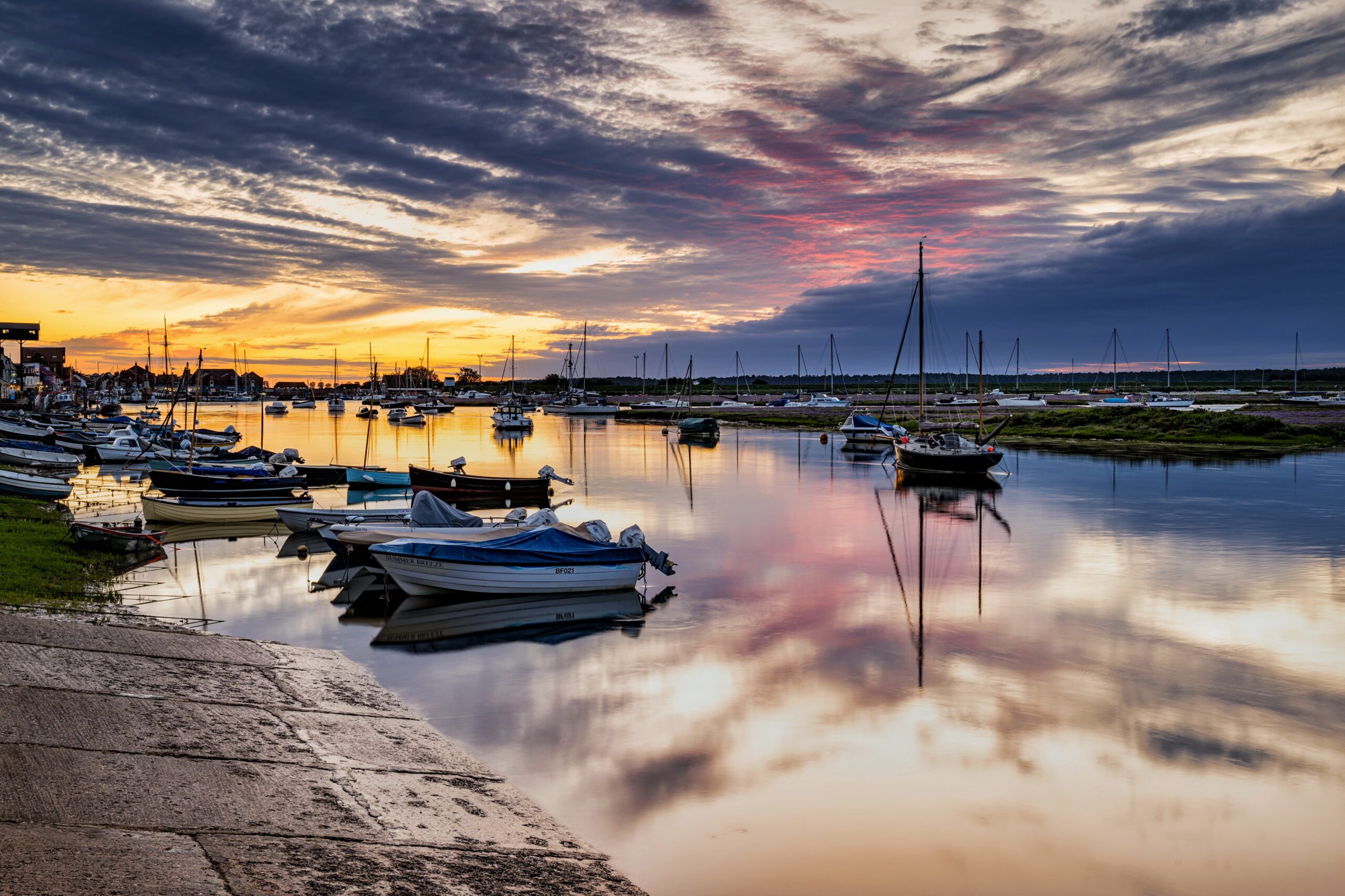The choice for this week’s club sunset trip was Wells Next-the-Sea with the suggested theme of harbour and boats.
Having had a busy day at work, and with a very overcast looking sky in Norwich, I was tempted to stay at home and have a lazy evening. However, my wife Kathryn said I would regret it and should go so gear all packed, off I went for the 30+ mile drive.
About Wells
Wells-next-the-Sea is a port town on the north coast of Norfolk, England.
Wells is 15 miles (24 km) to the east of the resort of Hunstanton, 20 miles (32 km) to the west of Cromer, and 10 miles (16 km) north of Fakenham. The city of Norwich lies 32 miles (51 km) to the south-east. Nearby villages include Blakeney, Burnham Market, Burnham Thorpe, Holkhamand Walsingham.
The name is Guella in the Domesday Book of 1086 (half gallicised, half Latinised from Anglian Wella, a spring). This derives from spring wells, of which Wells used to have many, rising through the chalk of the area.
The town became Wells-next-the-Sea from juxta mare in the 14th century to distinguish it from other places of the same name. It appears as Wells Next the Sea (no hyphens) on the Ordnance Survey maps of 1838 and 1921.
When the was opened on 1 December 1857, the terminus was given the name of Wells-on-Sea. In 1956 the Wells Urban District Council voted to re-adopt the name Wells-next-the-Sea, and this has been the official name since then.
The town has been a seaport since before the 14th century, when it supplied grain to London and subsequently to the miners of the north east, in return for which Wells was supplied with coal.
Until the 19th century, it was easier to carry bulk cargoes by sea than overland. It was a significant port in the 16th century, with 19 ships over 16 tons burden operating out of Wells in 1580, making it the major port in the area.
It had been, since the beginning of the century, an exporter of grain and an importer of coal. Wells was also from early days a manufactory of malt. At its height, the town boasted up to twelve maltings which, in 1750, contributed a third of the exports of malt from the country, mostly to Holland, more than any other port save for Great Yarmouth.
Wells was also a fishing port: in 1337, it is recorded as having had thirteen fishing boats and nearby Holkham had nine. Its mariners brought first herring and then cod from Iceland in quantity between the 15th and 17th centuries.
The distinctive landmark of the seafront is the granary with its overhanging gantry on the quay, started in 1904 and finished in 1905. This has now been converted into flats, having ceased operating as a granary in 1990.
The maritime tradition of the town meant it used to have a remarkable number of public houses for a town of its size although many of these have since closed.
Boats, boats, and more boats
As we walked from the car park near the high street, some members decided to focus on the harbour end for some shots. Myself and two others decided to walk further down.
I took my first shot and was struggling to see what composition I could get that would not look cluttered.

There were signs of some pleasant golden hour light arriving but with plenty of cloud.
At this point, I was beginning to think it was a wasted drive.
We continued walking down the road passed the harbour and stopped at a vantage point but there wasn’t much in the way of favourable light. We continued walking down passed a boat yard where there was a very quiet stretch of water with some moored up boats.

The boats made good subject with their reflection in the calm water. I really liked the patterns and colours the next shot captured.

The next shot I toned down the colours and applied a vignette.

It was at this point a fast boat with a guy and his teenage sons sped into the shore and broke the calm water. To be fair, they did apologise and the water eventually calmed again.
My two fellow club members had spotted the sky starting to light up back at the vantage point so wandered back. I stayed put but walked further up where more of the boats were moored and took the shot below.

I spent far too long trying to get this shot with the rope as a leading line.
I then glanced towards the harbour and could now see myself an amazing sky emerging so I walked back to the vantage point.
With one member on the mooring to my right looking down the quay, and another lower down on the slope to my left, I set up sort of diagonal towards the harbour.
What I could not have predicted was an amazing sunset as the capture below demonstrates.


Of course, I was thrilled to get this shot and it topped off a most enjoyable evening which was well worth the effort.
A good evening all round, and begrudgingly I have to admit my wife was right again!
Onwards and upwards…
